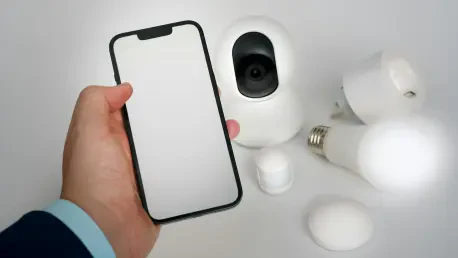Imagine a world where even the most remote corners of the planet are seamlessly connected, where farmers in isolated regions monitor crops in real-time, and oil rigs in the middle of the ocean transmit critical data without interruption. This vision is rapidly becoming a reality through the explosive growth of satellite Internet of Things (IoT) communications. A recent forecast predicts that the subscriber base for satellite IoT will skyrocket to 32.5 million by 2029, driven by the technology’s unique ability to bridge connectivity gaps where terrestrial networks fall short. With only about 10 percent of the Earth’s surface covered by traditional networks, satellite IoT offers a lifeline for industries like agriculture, maritime, and utilities operating in underserved areas. This remarkable trajectory, fueled by innovation and strategic partnerships, raises intriguing questions about how this technology will evolve and what forces will propel it to such heights over the next few years.
The Surge in Satellite IoT Demand
The satellite IoT market is on an unprecedented growth path, with projections indicating a compound annual growth rate (CAGR) of 41.1 percent from now until 2029, when the subscriber base is expected to reach 32.5 million. This surge is largely driven by the inherent limitations of terrestrial connectivity, which struggles to reach remote and rural regions. Industries such as agriculture, asset tracking, and oil and gas exploration increasingly rely on satellite solutions to maintain operations in areas beyond the reach of traditional networks. The technology ensures that critical data—whether it’s tracking shipping containers across oceans or monitoring environmental conditions in desolate landscapes—can be transmitted reliably. As global demand for real-time data continues to rise, satellite IoT stands out as an indispensable tool, filling the void left by conventional systems and enabling businesses to operate efficiently in the most challenging environments.
Beyond the immediate need for connectivity, the expansion of satellite IoT is also fueled by its versatility across diverse applications. Governments and utilities are adopting these solutions for disaster response and infrastructure monitoring, while the construction and transportation sectors leverage them for logistics and fleet management. The ability to support such a wide array of use cases positions satellite IoT as a transformative force in global communications. Unlike terrestrial networks, which require extensive and costly infrastructure, satellite systems can be deployed more flexibly, offering scalability for businesses of all sizes. This adaptability, combined with growing recognition of the technology’s value, suggests that adoption rates will continue to accelerate. As more industries awaken to the potential of uninterrupted connectivity, the market is poised to redefine how data is accessed and utilized in regions previously considered unreachable.
Competitive Dynamics and Innovation
The satellite IoT landscape is marked by a dynamic mix of established giants and ambitious newcomers, each contributing to the market’s rapid evolution. Leading the charge are companies like Iridium, with a robust subscriber base of 2 million, alongside Orbcomm and Globalstar, serving hundreds of thousands of users with comprehensive solutions. These incumbents have built a strong foundation, offering reliable services that cater to critical industries. However, the field is far from static, as over two dozen emerging players, including Astrocast and Kineis, are entering with innovative approaches. Many of these newer entrants utilize low-earth orbit (LEO) smallsat technologies, which promise lower latency and enhanced coverage. This influx of competition is driving technological advancements, ensuring that the market remains vibrant and responsive to the diverse needs of global users.
Innovation in this sector extends beyond traditional satellite systems, with many operators exploring integration with terrestrial wireless standards such as 3GPP 4G/5G and LoRa. These hybrid approaches aim to combine the strengths of both satellite and ground-based networks, creating seamless connectivity solutions. A notable example is the use of unconventional technologies like Bluetooth for IoT applications, as pioneered by some startups. This willingness to experiment with diverse systems underscores the industry’s commitment to pushing boundaries. As established players refine their offerings and new entrants introduce disruptive ideas, the competitive landscape fosters an environment of continuous improvement. This rivalry not only accelerates the pace of technological progress but also ensures that end users benefit from a broader range of options tailored to specific operational demands.
Hybrid Models and Strategic Partnerships
A defining trend in the satellite IoT sector is the growing collaboration between satellite operators and mobile network providers, paving the way for hybrid connectivity solutions. These partnerships aim to blend the extensive reach of satellite networks with the reliability of terrestrial systems, creating a more robust framework for IoT applications. Companies like Skylo are at the forefront of this movement, forging alliances with major telecom giants to enhance coverage and service quality. Such collaborations signal a broader industry consensus that integrated models are essential for addressing the complex connectivity challenges faced by modern businesses. By leveraging the strengths of both systems, these hybrid solutions promise to deliver unparalleled reliability, especially in remote regions where standalone networks often falter.
The impact of these strategic alliances extends beyond technical improvements, as they also facilitate market expansion and accessibility. Operators like Sateliot and AST SpaceMobile are actively pursuing similar partnerships, recognizing that collaboration can accelerate the adoption of satellite IoT across diverse sectors. This cooperative approach allows for shared resources and expertise, reducing costs and enhancing scalability. As a result, businesses in industries ranging from maritime to government operations can access tailored connectivity solutions that were previously out of reach. The emphasis on hybrid models reflects a forward-thinking mindset within the industry, acknowledging that no single technology can meet all needs. Looking ahead, these partnerships are likely to play a pivotal role in shaping the trajectory of satellite IoT, ensuring that the technology remains adaptable and responsive to an ever-changing global landscape.
Reflecting on a Connected Future
Looking back, the journey of satellite IoT reveals a sector that has transformed from a niche solution to a cornerstone of global communications. The remarkable growth projections, intense competition, and innovative hybrid models demonstrate how far the industry has come in addressing connectivity gaps. As the market moves toward 32.5 million subscribers by 2029, it becomes clear that strategic collaborations and technological advancements are the bedrock of this evolution. For stakeholders, the next steps involve investing in scalable solutions and fostering partnerships that prioritize seamless integration. Exploring opportunities in emerging markets and refining hybrid systems offer a pathway to sustain this momentum. Ultimately, the focus shifts to ensuring that satellite IoT continues to empower industries in remote regions, solidifying its role as a vital link in the global data network.









